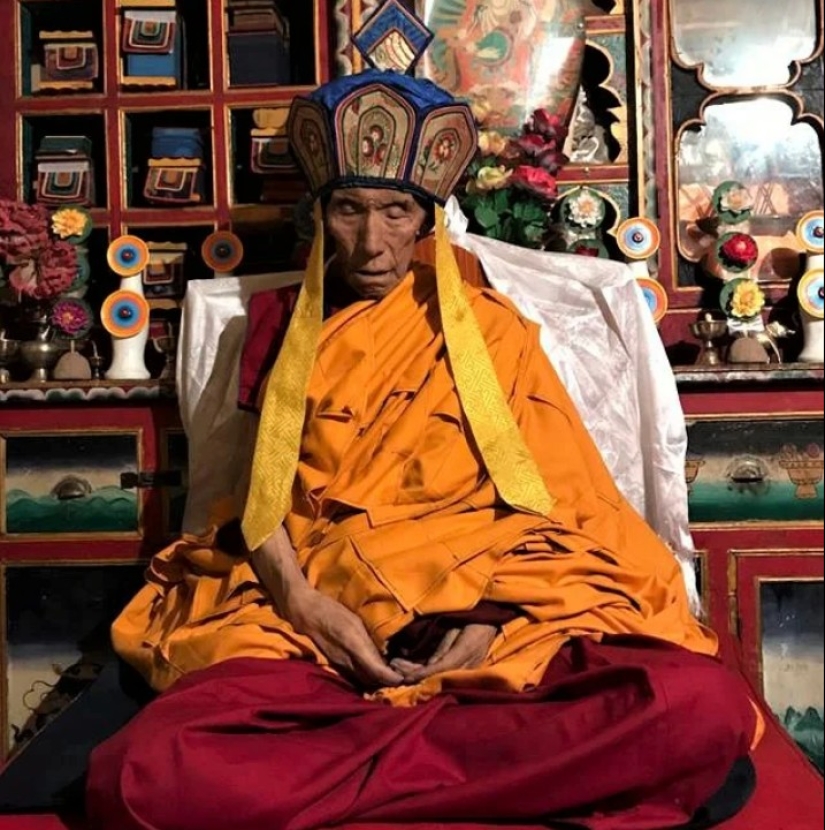How Dead Tibetan Monks Baffled Science by Refusing to Decompose
Categories: Science
By Pictolic https://pictolic.com/article/how-dead-tibetan-monks-baffled-science-by-refusing-to-decompose.htmlWe all know that decomposition is a natural process that no living being can avoid after death. You can stop it with the help of cold, mummification or... another method used since ancient times by Tibetan monks. Tukdam-a condition in which the body of a deceased monk does not decompose for 2-3 weeks, has no explanation from the point of view of science.

The fact that the bodies of some monks from Tibetan monasteries do not decompose for a long time after death is not surprising for their fellow monks in the monastery. They simply say that these people are not dead, but are immersed in a deep meditation called "tukdam".

Official science refutes the meditative nature of this phenomenon, so the meditating person is still alive, and the monks in tukdam have not found the slightest traces of brain activity. They are simply in meditation poses in which they have been overtaken by death and ignore the laws of nature, refusing to succumb to decomposition for up to three weeks.
Buddhist monks claim that in the state of tukdam, the soul still remains in the body and the person is still alive. The transition to this phase begins with the "clear light" meditation, during which the monk's mind expands until it dissolves into the universal consciousness and does not part with the body. From this moment, the first signs of decomposition begin to appear.

The head of the Buddhists, the Dalai Lama, as a passionate supporter of science, has been looking for specialists who can find an explanation for this phenomenon for twenty years. The chief monk does not find anything reprehensible in bringing a scientific basis for a mystical phenomenon. On this occasion, he said the following words:
Currently, scientists from the Center for Brain Health at the University of Wisconsin-Madison are working on the issue of tukdam. The work within the framework of the "Tukdam Project" is headed by one of the most famous neuroscientists in the United States, Richard Davidson. The material obtained as a result of the research was enough for the scientist for more than a hundred articles, but he is still far from a complete solution of the phenomenon.

Davidson first encountered such a phenomenon as tukdam after the death of his close friend and spiritual mentor, the Buddhist monk Geshe Lhundub Sopa. When the doctor saw the body of the deceased five days after his death, he was amazed that he looked as if he had passed away a few minutes ago.
The first report of the "Tukdam Project" was published in January 2021. In it, the scientists reported that they conducted encephalographic studies of the brain of 13 deceased monks and did not find the slightest trace of brain activity. Scientists are concerned about why decomposition, traces of which usually begin to appear 4 minutes after death and become obvious the next day, are invisible on the bodies of Tibetan monks.
According to the Dalai Lama, the lack of progress in the study does not mean that the phenomenon of tukdam has a supernatural nature:

The absence of traces of corruption is not the only mystery offered by the dead Buddhist monks to science. Monk Luang Pho Pian from Thailand not only did not decompose in two months, but also smiled after death, baffling both scientists and colleagues.
Keywords: Death | Science | Religion | Tibet | Dalai lama | Monks | Meditation | Corpse
Post News ArticleRecent articles

Victor Lustig is considered one of the most skillful and famous scammers in the world. He was arrested about 50 times and released ...

A small apartment is not a sentence! On the contrary, this is an occasion to turn on imagination and come up with ways to stylishly ...
Related articles

Millions of people around the world buy lottery tickets in the hope of winning a happy life. They dream of luxury cars, luxury ...

In 1969, a healthy food restaurant opened on the Sunset Strip in Los Angeles-one of the first in the country, and possibly in the ...

In the 90s, The Viper Room nightclub was a favorite place of entertainment for many stars. In 1993, it was created by Johnny Depp ...

Each of us has heard at least once that "breakfast is the most important meal of the day." Spreading this truth is the work of ...